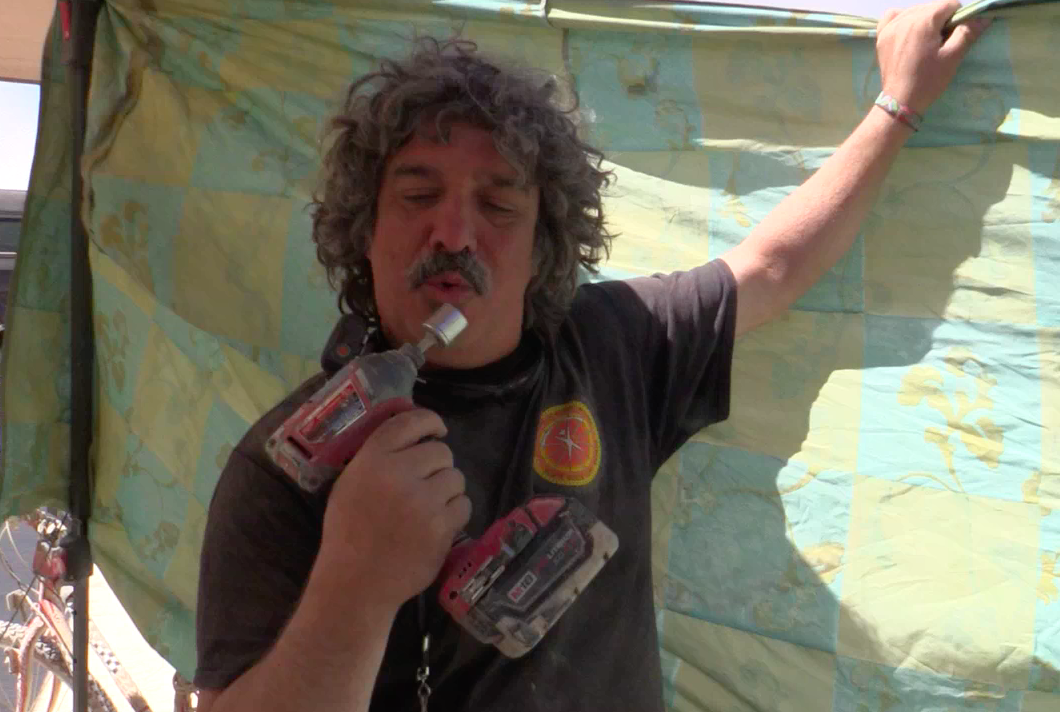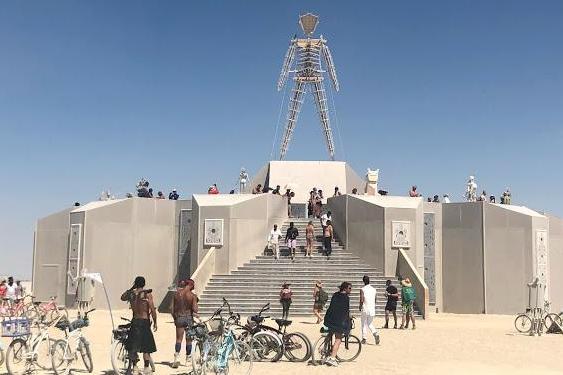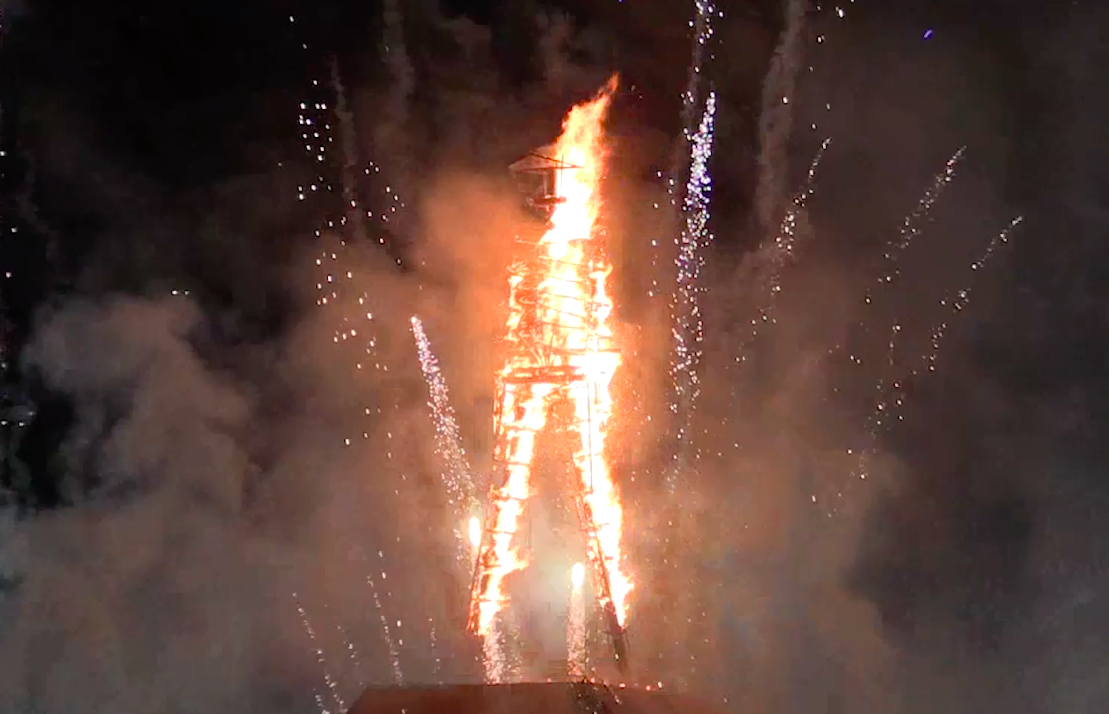Burning Man 2018: Meet the British artist who creates the spectacular 'man base' centrepiece
He spends 10 months making his vision into a reality, then watches as it's destroyed in minutes
Your support helps us to tell the story
From reproductive rights to climate change to Big Tech, The Independent is on the ground when the story is developing. Whether it's investigating the financials of Elon Musk's pro-Trump PAC or producing our latest documentary, 'The A Word', which shines a light on the American women fighting for reproductive rights, we know how important it is to parse out the facts from the messaging.
At such a critical moment in US history, we need reporters on the ground. Your donation allows us to keep sending journalists to speak to both sides of the story.
The Independent is trusted by Americans across the entire political spectrum. And unlike many other quality news outlets, we choose not to lock Americans out of our reporting and analysis with paywalls. We believe quality journalism should be available to everyone, paid for by those who can afford it.
Your support makes all the difference.Weeks before Burning Man even takes shape, a “golden spike” is hammered into the centre of Black Rock Desert, the remote dry lake on which the iconic temporary city appears in late August.
It marks the precise centre of Burning Man, the point from which all parts of the site are measured, and the spot upon which the man – the neon-lit effigy that is burned on the penultimate day – is constructed.
Around the spike stand the key players behind the legendary arts, music and community experiment – the men and women who bring it from concept to fruition.
Among them every year is an unassuming, shaggy-haired, middle-aged man from Lancashire called Andrew Johnstone. He’s the man behind the man – the designer of the highly stylised base on which the man stands – the visionary who helps create the most iconic moment of each year’s event. The Durham University-educated artist is based in Oakland, California, these days, and is a key player at Burning Man.
“It’s not gold and it’s not a spike,” he laughs: “It’s a bit of rebar that we hammer into the desert, say a few words around, then smash a bottle of champagne on top of it.”

It’s a ritual that’s grown up around the event, which started as a beach-front gathering back in 1980s San Francisco. Some attendees clutch umbrellas to shield themselves from the scorching Nevada sunshine, as everyone takes turns to say a few words, miles from anywhere, about life, death, hopes and fears.
It’s on that very spot on which Andrew’s vision has become reality for the past eight years, around 10 months after each year’s design is first given the green light – over a curry and several beers.

“It became something of a tradition,” he says with a smile. “I’d meet Larry (Harvey, the founder of Burning Man who died in April this year) for a curry and a beer. He’d call me in advance with the theme for that particular year, and I’d arrive at the restaurant with 2/3 sketches of what the base could look like.
“He’d look at each one and tear it up, saying he didn’t like any of them. Then, we’d have a few more beers, and he’d look back at them, start piecing them together, then slowly decide that he liked one of them.”
That event would typically happen in October, and by Christmas, there’d be a solid design. It’s such a huge project that there’s a pre-build in Reno, 120 miles away. Then, a few weeks before Burning Man, construction begins after it’s transported to the site on a convoy of 15 semi-trucks.

This year, the base was fitted with six $20,000 projectors, which beamed robot-themed imagery onto the inside of the almost brutalist structure. It sat at the centre of Burning Man all week, two huge staircases on either side, on which throngs of people gathered day and night.
Then, on Saturday, it was closed off, officially handed over to a pyrotechnics team, who rigged it with fireworks and explosives ahead of the burn on Sunday. They also made strategic cuts in the structure, to make sure that it collapsed in a predictable manner as it burned.
The Independent spoke to Andrew, 56, a day before the burn, and asked how it felt to see 10 months of hard work go up in smoke.
“I get a ringside spot,” he said, “the crowds are held back but I get in a little bit closer to see it burn up close. Everyone asks how I feel when it burns, but I look at it like this: from the moment my idea is approved in October, there are endless meetings and lots of stress which continues right up until the fire is lit. At that point, there’s no return. That’s the point of no return. All of that stress and all of that pressure is gone, as I’ve no more control over it.”
He laughs about the extravagance of the burn itself. “It’s probably the largest art project on the planet right now. There’s a million pounds worth of art standing out there. And we’re going to burn it down.”
He admits that this year’s event held a “certain melancholy” for him. “It’s the last one that Larry had influence over, and oversaw,” he says. “He had an omnibus mind. He was a genius. He wasn’t my boss, he was one of my best friends. He was never obsessed with hierarchy.”
Larry Harvey, the main co-founder of Burning Man, died following a massive stroke at his home in San Francisco. Across the site this year were tributes to him, including murals around centre camp, and scrawled tributes in the intricate temple close to man base.
The night before our interview, Andrew had been at a memorial service on site for Larry. He played bagpipes (he’s half-Scottish, and his Twitter handle is @BurningHaggis).
“We set him free last night,” he says. “He was the Colonel Sanders of our stupid chicken restaurant. But he always envisioned this as a 100-year project. We’ve barely started,” he adds, eyes shining with excitement.
This year’s man base will be the last that Larry had influence over, but Andrew doesn’t plan on stopping anytime soon: “My favourite man base is always next year’s. I’m always excited about it. Burning Man is the ultimate blank canvas, and it’s the biggest gift to be able to create the centrepiece.”
Unlike the hedonism that surrounds him, his time at Burning Man appears rather sedate. There’s no beer in sight as he nibbles from a plate of pistachios, olives and pickles while we talk, with his wife sitting nearby.
His 17-year-old son is here too, the envy of his schoolmates, having been to every single Burning Man since his birth. At his first, he was aged just 10 months.
I look surprised, but he counters: “There are worse things to bring your kids up on than Larry’s principles.”

Join our commenting forum
Join thought-provoking conversations, follow other Independent readers and see their replies
Comments